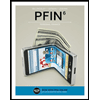Your client is terminally ill. Her potential gross estate, valued at $12.9 million, includes the following assets: A life insurance policy on her life, with a death benefit of $500,000; her deceased husband is the named beneficiary A general power of appointment (valued at $500,000) over the assets of a trust established by her husband; her children are the designated remaindermen of the trust A $500,000 retained life estate in the family residence Your client also expects to receive a $500,000 bequest within the next four months from her deceased sister's estate; the client's children are the contingent beneficiaries of the bequest. Your client would like to transfer a portion of her estate to her two children while she is alive to reduce her potential estate tax liability to the greatest extent possible. Which one of the following exclusion techniques would be the most appropriate to reduce the value of your client's potential gross estate? A) release her general power of appointment over the trust B) transfer the retained life estate to her children C) transfer the life insurance policy to her children D) disclaim the inheritance before accepting any benefits
Your client is terminally ill. Her potential gross estate, valued at $12.9 million, includes the following assets: A life insurance policy on her life, with a death benefit of $500,000; her deceased husband is the named beneficiary A general power of appointment (valued at $500,000) over the assets of a trust established by her husband; her children are the designated remaindermen of the trust A $500,000 retained life estate in the family residence Your client also expects to receive a $500,000 bequest within the next four months from her deceased sister's estate; the client's children are the contingent beneficiaries of the bequest. Your client would like to transfer a portion of her estate to her two children while she is alive to reduce her potential estate tax liability to the greatest extent possible. Which one of the following exclusion techniques would be the most appropriate to reduce the value of your client's potential gross estate? A) release her general power of appointment over the trust B) transfer the retained life estate to her children C) transfer the life insurance policy to her children D) disclaim the inheritance before accepting any benefits
Chapter8: Trusts
Section: Chapter Questions
Problem 2SYPS
Related questions
Question
Question #59 of 85
Question ID: 1251855
Your client is terminally ill. Her potential gross estate, valued at $12.9 million, includes the following assets:
- A life insurance policy on her life, with a death benefit of $500,000; her deceased husband is the named beneficiary
- A general power of appointment (valued at $500,000) over the assets of a trust established by her husband; her children are the designated remaindermen of the trust
- A $500,000 retained life estate in the family residence
Your client also expects to receive a $500,000 bequest within the next four months from her deceased sister's estate; the client's children are the contingent beneficiaries of the bequest. Your client would like to transfer a portion of her estate to her two children while she is alive to reduce her potential estate tax liability to the greatest extent possible.
Which one of the following exclusion techniques would be the most appropriate to reduce the value of your client's potential gross estate?
A)
release her general power of appointment over the trust
B)
transfer the retained life estate to her children
C)
transfer the life insurance policy to her children
D)
disclaim the inheritance before accepting any benefits
Expert Solution
This question has been solved!
Explore an expertly crafted, step-by-step solution for a thorough understanding of key concepts.
This is a popular solution!
Trending now
This is a popular solution!
Step by step
Solved in 4 steps

Knowledge Booster
Learn more about
Need a deep-dive on the concept behind this application? Look no further. Learn more about this topic, accounting and related others by exploring similar questions and additional content below.Recommended textbooks for you







PFIN (with PFIN Online, 1 term (6 months) Printed…
Finance
ISBN:
9781337117005
Author:
Randall Billingsley, Lawrence J. Gitman, Michael D. Joehnk
Publisher:
Cengage Learning


Pfin (with Mindtap, 1 Term Printed Access Card) (…
Finance
ISBN:
9780357033609
Author:
Randall Billingsley, Lawrence J. Gitman, Michael D. Joehnk
Publisher:
Cengage Learning